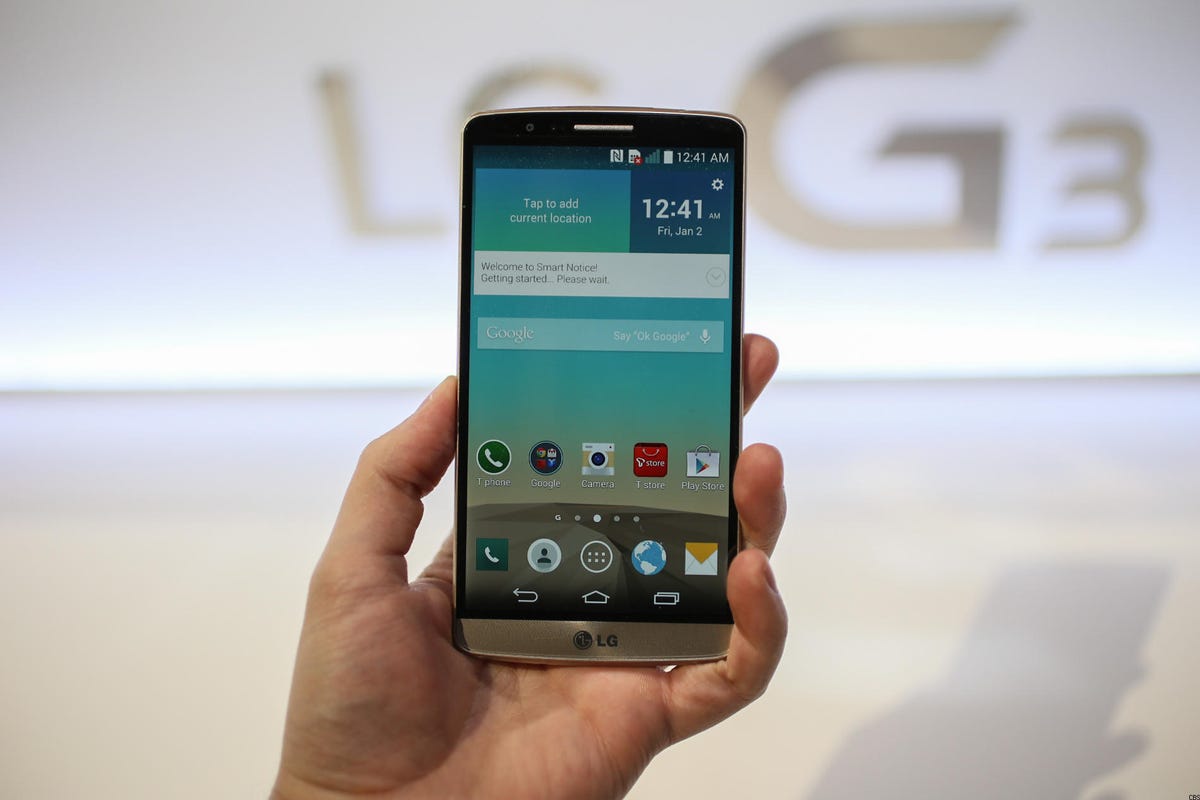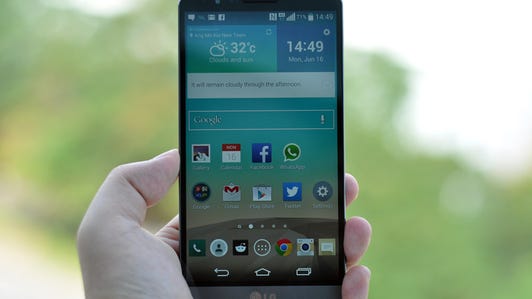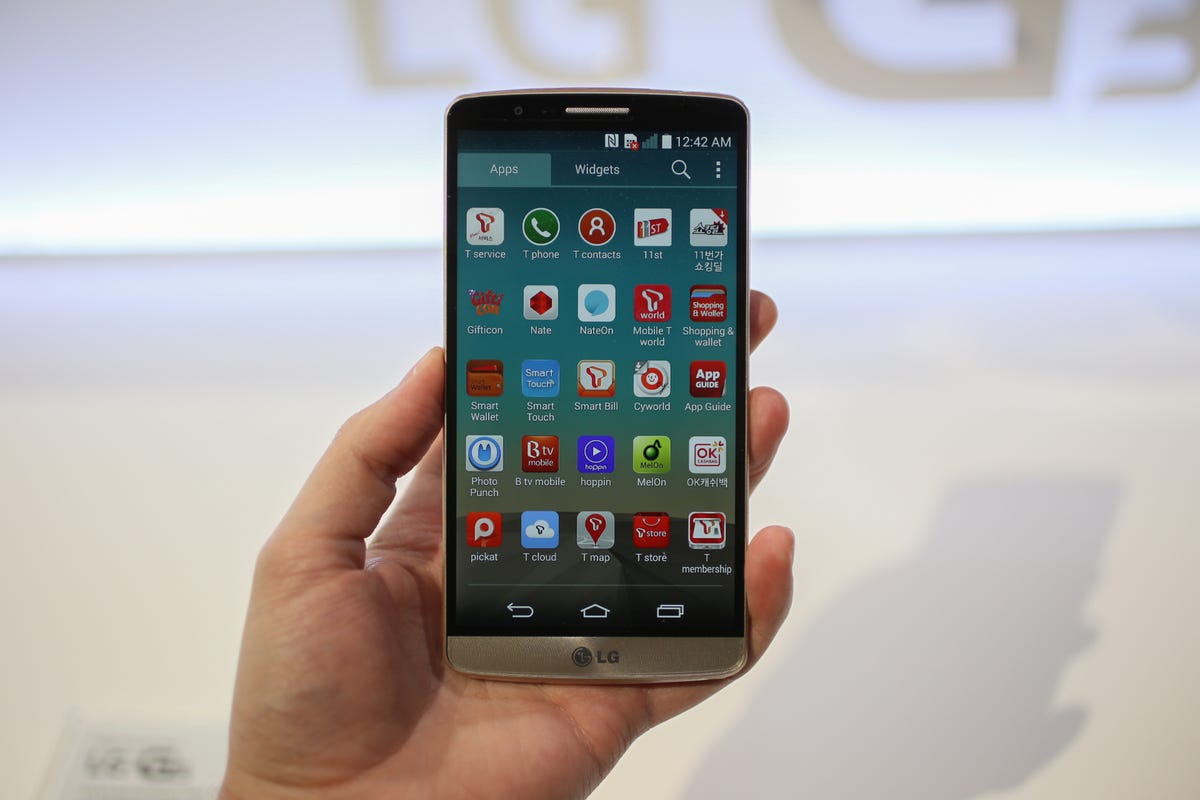
Andrew Hoyle/CNET
The LG G3 has a dizzying lineup of specs, including a supercharged quad-core processor, 3GB of RAM and a camera that uses lasers to focus. Arguably its most mind-boggling feature is its 5.5-inch display, which has a whopping 2,560×1,440-pixel resolution.
That’s way more than the 1,920×1,080 pixels of the Samsung Galaxy S5 , but does packing in extra pixels really make for a noticeably better image, or is this just marketing nonsense? I compared the LG G3’s 1440p display to the 1080p Galaxy S5 to find out.
It might seem common sense that more pixels in a screen will give a sharper image — that’s true, but only to an extent. The difference between a 320×480-pixel budget phone from years ago and the 720p Galaxy S3 is huge, but the differences are far smaller between higher resolutions. There was a big debate about whether 1080p was strictly necessary in a handset, let alone 1440p.
With the iPhone , Apple has always argued that a pixel density of 326 pixels per inch (ppi) is sufficient that at normal use (around 30cm from your face) you can’t distinguish individual pixels. That’s what Apple calls a “Retina display”. The LG G3, however, clocks in at a whopping 538ppi — 65 percent more pixels in every inch of screen.
What’s the highest resolution a human eye can see?
According to Daniel Gleeson, Senior Analyst at IHS, that may be overkill. “At 30cm, a perfectly healthy human eye with 20/12 vision would be able to see 466 pixels per inch,” he told me.
“20/12 vision means an eye can tell apart things that are 0.625 arc minutes apart,” Gleeson says. “Using the cosine rule to work out the physical distance this translates to 0.002147 inches at a distance of 30cm. So that would be the size of the smallest pixel the eye could see. This means the resolution is 1/0.002147 = 466.
LG G3 shows off high-res screen, metallic back (pictures)






“The main benefits of very high resolution screens on smartphones are in reading small text or in viewing detailed images,” Gleeson explains. “From a manufacturer’s point of view however, the resolution of the display is one of the elements of the phone that is immediately noticed by a consumer browsing through handsets in a store. As a result, improving the display has been a continuing war between the various manufacturers [to attract consumer attention].”
Which do we prefer?
Maths aside, I passed the G3 and S5 around the CNET office with a variety of test photos, along with a 1440p resolution test video to see what differences people could see.
Overwhelmingly, the consensus was that there’s no noticeable difference in detail. My excellent colleague Luke Westaway spent a good 5 minutes staring at the displays, before asking for a magnifying glass and eventually concluding that that he couldn’t tell any difference.
Several others agreed that they couldn’t pick a winner, but CNET News’s Rich Trenholm thought that video had more detail on the G3, which lent it a certain “depth”. XCAR‘s Alex Goy also thought the G3 had superior clarity on all tests, saying, “You can see far more.”
I personally couldn’t tell the difference when it came to still images — both screens showed an impressive level of detail, making even tiny objects (such as hairs) easily visible. Even when looking with my nose almost against the screen, I failed to detect much difference. I found the G3 to have a slight edge on the video test, but the discrepancy was so small, it really wouldn’t change anyone’s buying decision.


Andrew Hoyle/CNET
It’s not all about resolution
The colour balance and brightness of the two screens were more contentious, however. The Galaxy S5’s screen was significantly brighter than the G3’s and, while its colours were more vivid, they had a warmer colour cast that split opinion. CNET Director of Content Jason Jenkins said, “The S5 has a lot more pop… it’s just a nicer picture,” while Associate Editor Bea Mitchell thought the S5 was superior all round.
However, GameSpot‘s Cameron Robinson, Alex Goy, Luke Westaway and I all preferred the more natural colour tones of the G3’s display, even though it wasn’t quite as bright as the S5.
We can reasonably say, then, that having a 1440p display really doesn’t provide the sort of increase in clarity you might be hoping for when you shell out for the G3. Any difference between the resolutions is at most minimal and doesn’t have any real impact on anything you’re likely to do with your phone. The most important improvements a screen can receive are in colour tones and brightness, rather than resolution. Punchier colours and deeper black levels will help make your Netflix shows pop way more than cramming in extra pixels.
As Daniel Gleeson rightly points out though, a 1440p display is an extra bragging right a company can use to sell its phone over a rival’s, even if it doesn’t provide a real improvement. You can therefore expect to continue to see increasingly high resolution displays on phones from all the major manufacturers.
My advice would be to ignore the marketing messages and actually look at the screens for yourself to decide which one you think looks the best.



